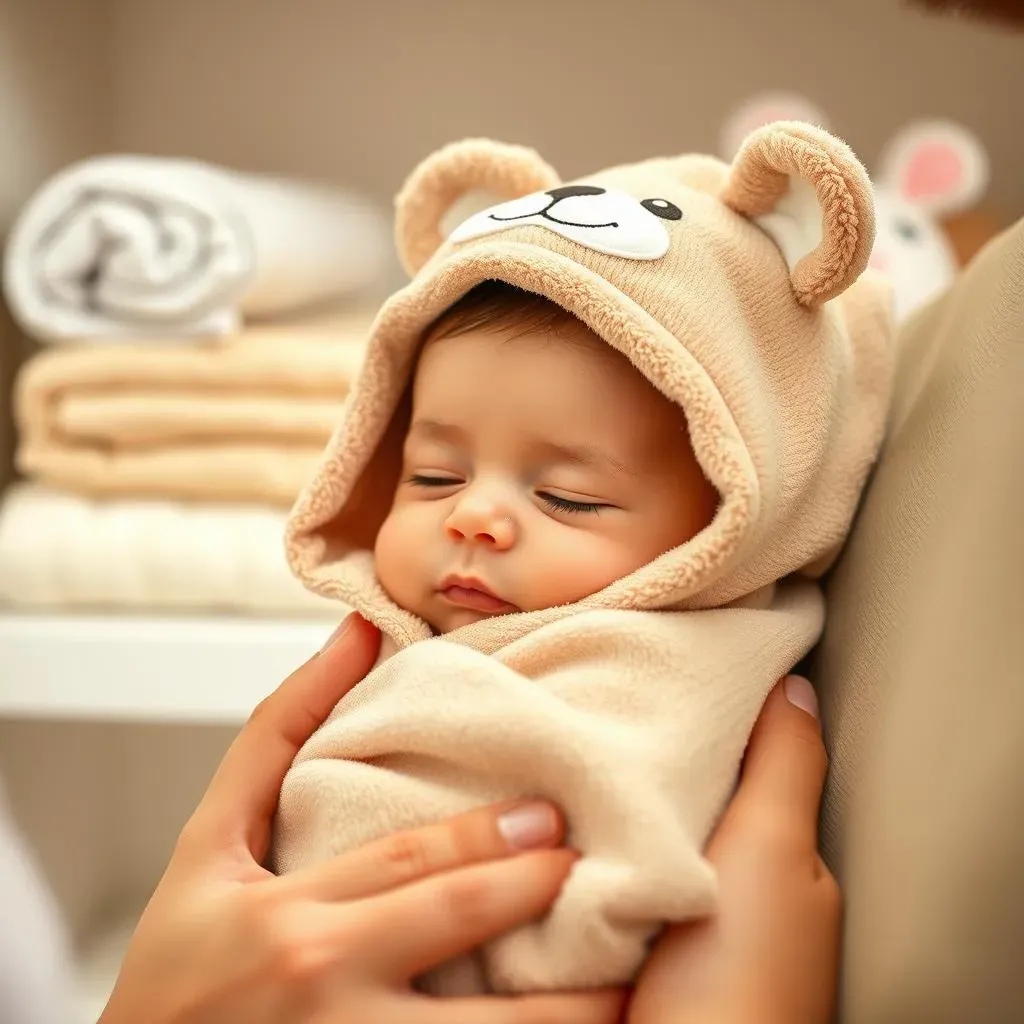Table of Contents
Bringing a new baby home is a whirlwind of excitement and a mountain of questions, especially for first-time parents. Among the many items on your baby checklist, you might be wondering: how many hooded towels does baby need? It's a common question! You want to be prepared, but also avoid overbuying things that will just clutter your nursery. This article will cut through the confusion and provide practical guidance on determining the right number of hooded towels for your little one. We'll explore why hooded towels are a nursery staple, factors to consider when making your purchase, and how many washcloths you'll need to complement your towel collection. Plus, we'll cover essential tips on caring for your baby's delicate skin and keeping those towels clean and cozy. Get ready to streamline your baby bath routine with our straightforward advice!
Why Hooded Towels for Babies are a Nursery Staple
Why Hooded Towels for Babies are a Nursery Staple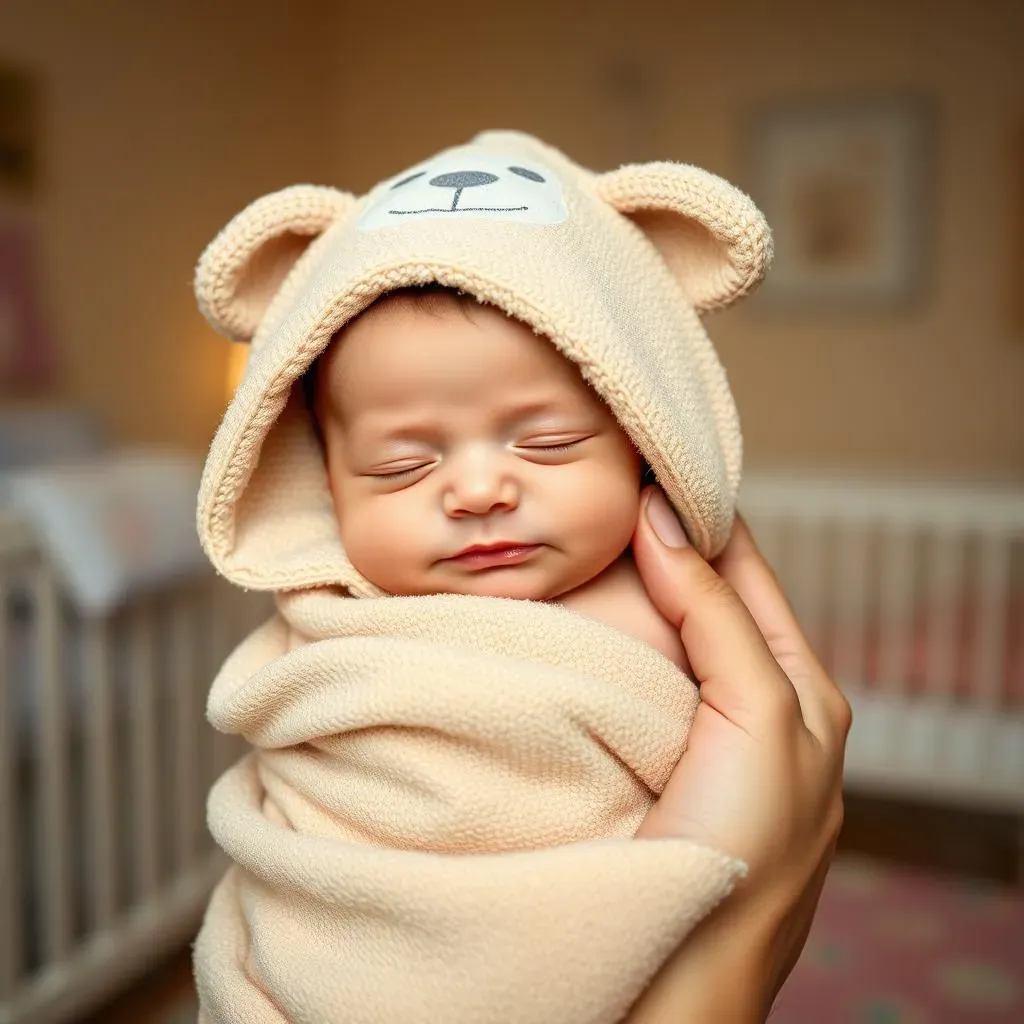
The Snuggle Factor: Comfort and Security
Let's be real, is there anything cuter than a baby wrapped up in a hooded towel? Beyond the adorable factor, hooded towels provide a sense of security and comfort for your little one after bath time. The hood helps to keep their head warm, which is especially important for newborns who have trouble regulating their body temperature. It's like a warm hug that helps them transition from the bath to the next activity, whether it's feeding, getting dressed, or just cuddling with you. It's more than just drying off; it's about creating a positive association with bath time.
When my niece was a baby, she would fuss every time we took her out of the bath. But as soon as we wrapped her in her favorite bear-eared hooded towel, she would instantly calm down. It was like her little security blanket! That's when I realized the true value of these towels. They aren't just practical; they're comforting.
Practicality and Convenience: More Than Just Cute
While the cuteness is a definite bonus, hooded towels are also incredibly practical. They're designed to stay in place, which is a lifesaver when you're trying to wrangle a slippery, squirming baby. The hood prevents the towel from slipping off their head, keeping them warm and preventing chills. Plus, they're the perfect size for wrapping your baby up completely, ensuring they're dry from head to toe. No more struggling with oversized adult towels that drag on the floor!
Think about it: you're juggling a wet baby, diaper cream, and a pile of clothes. The last thing you want is a towel that keeps falling off. Hooded towels simplify the process, allowing you to focus on what really matters: bonding with your little one. They are easy to use and care for, making them an indispensable part of your baby care routine. They are also great for after swimming!
Factors to Consider When Deciding How Many Hooded Towels to Buy
Factors to Consider When Deciding How Many Hooded Towels to Buy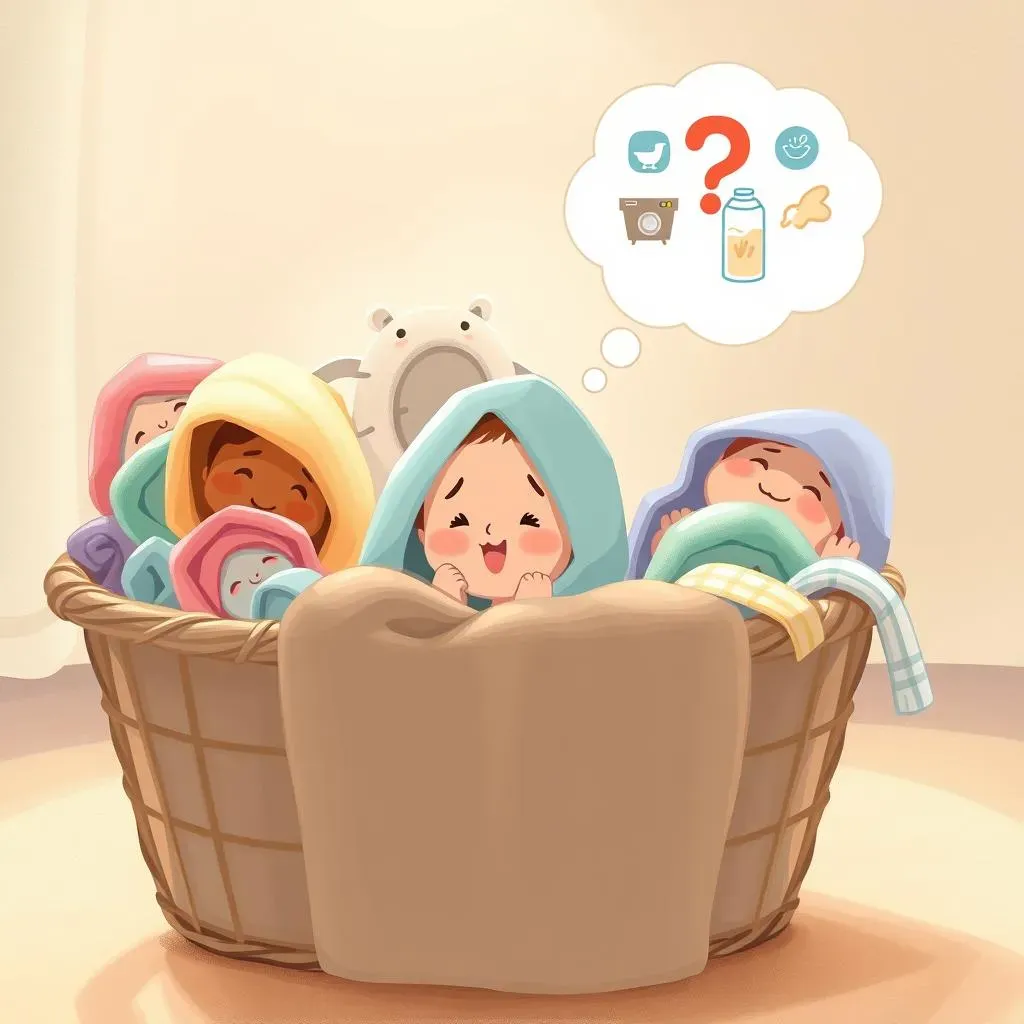
so you're sold on the cuteness and practicality of hooded towels. Now comes the big question: how many hooded towels does baby need, really? The answer isn't one-size-fits-all, as several factors come into play. Think about how often you plan to do laundry. If you're a laundry-every-day kind of person, you can probably get away with fewer towels. But if you tend to let the laundry pile up (no judgment here!), you'll want to have a few more on hand. Also, consider the frequency of baths. Some babies enjoy a daily bath, while others only need a bath every few days. And don't forget about those unexpected spills and spit-ups! Having extra towels ensures you're always prepared for those little messes. Ultimately, finding the right number is about balancing convenience with your personal laundry habits and your baby's needs.
Also, think about the quality of the towels. Some hooded towels are super absorbent and quick-drying, meaning you might not need as many. Others might take longer to dry, especially in humid climates, so you'll want to have more on hand to avoid damp towels. And, of course, consider your budget. Hooded towels can range in price, so finding a balance between quality and affordability is key. You can always start with a smaller number and add more later if you find you need them. It's all about figuring out what works best for you and your baby!
Factor | Considerations | Impact on Quantity |
|---|---|---|
Laundry Frequency | Daily vs. Weekly | More laundry = Fewer towels needed |
Bath Frequency | Daily vs. Every Few Days | More baths = More towels needed |
Spit-Up/Mess Potential | Frequent vs. Rare | More messes = More towels needed |
Towel Absorbency | High vs. Low | High absorbency = Fewer towels needed |
How Many Washcloths are Needed Alongside Hooded Towels?
How Many Washcloths are Needed Alongside Hooded Towels?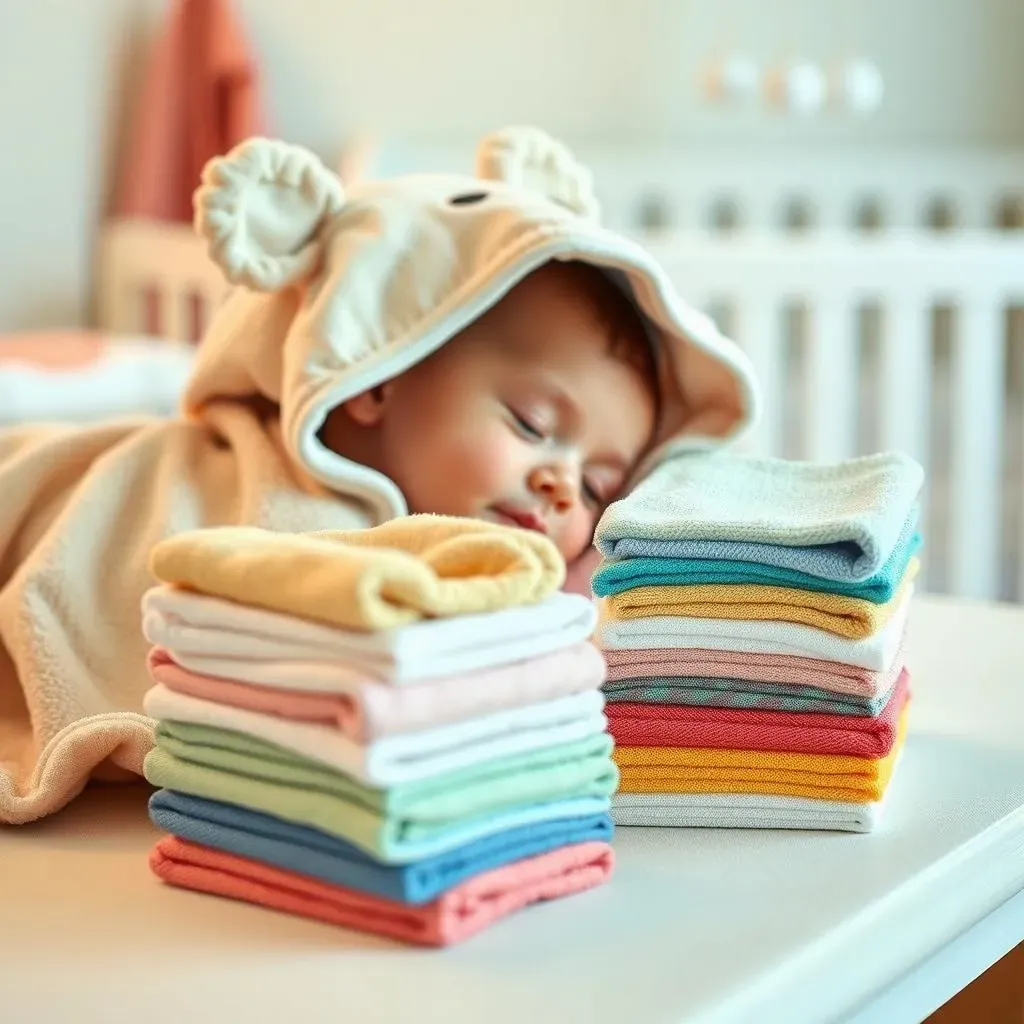
More Than Just Bath Time: The Versatility of Washcloths
so you've got your hooded towels sorted, but what about washcloths? How many washcloths are needed alongside hooded towels? Trust me, you can never have too many! Washcloths are the unsung heroes of baby care. They're not just for bath time; they're essential for everything from wiping up spit-up and cleaning sticky hands to gentle face washes and even diaper changes. Think of them as your all-purpose cleaning tool for all things baby-related. When you're dealing with a newborn, messes are inevitable, so being well-stocked with washcloths is a must. They're also great for using during bath time to gently wash your baby's skin, especially in those delicate areas.
I remember when my friend had her first baby, she underestimated the number of washcloths she would need. She quickly realized that she was constantly running out and doing laundry every single day! After that, she stocked up on a huge pile of washcloths, and it made her life so much easier. So, learn from her mistake and make sure you have plenty on hand!
Finding the Right Number: A Practical Approach
So, what's the magic number? As a general rule, I recommend having at least 10-20 washcloths on hand. This might seem like a lot, but trust me, you'll use them! This allows you to have enough for daily baths, unexpected messes, and everything in between, without constantly doing laundry. It is important to know that the number of washcloths you need can depend on how often you do laundry and how messy your baby is. If you do laundry frequently, you might be able to get away with fewer washcloths. But if your baby is a champion spitter-upper, you'll definitely want to have more on hand. Also, consider having separate sets of washcloths for different purposes. For example, you might have one set for bath time and another set for cleaning up messes. This helps to keep things organized and hygienic.
Also, think about the type of washcloths you're using. Some washcloths are more absorbent than others, so you might not need as many of those. Others might be softer and gentler on your baby's skin, which is especially important for newborns. Experiment with different types of washcloths to find what works best for you and your baby. And don't forget to wash them regularly to keep them clean and fresh!
Material Matters: Choosing the Best Washcloths for Your Baby
When it comes to washcloths, the material matters! Opt for soft, gentle fabrics that won't irritate your baby's delicate skin. Cotton is a classic choice, as it's absorbent, durable, and easy to care for. Bamboo washcloths are another great option, as they're incredibly soft and naturally antibacterial. Microfiber washcloths are also popular, as they're super absorbent and quick-drying. Avoid washcloths with rough textures or harsh dyes, as these can irritate your baby's skin. Organic cotton washcloths are a great choice if you're concerned about chemicals and pesticides. Ultimately, the best washcloth is one that is soft, gentle, and safe for your baby's skin.
Also, think about the size of the washcloths. Smaller washcloths are great for cleaning up small messes, while larger washcloths are better for bath time. Having a variety of sizes on hand can be helpful. And don't forget to replace your washcloths regularly, as they can wear out over time. With the right washcloths, you can keep your baby clean, comfortable, and happy!
Material | Pros | Cons |
|---|---|---|
Cotton | Absorbent, durable, easy to care for | Can shrink, may not be as soft as other options |
Bamboo | Incredibly soft, naturally antibacterial | Can be more expensive |
Microfiber | Super absorbent, quick-drying | May not be as gentle on sensitive skin |
Caring for Your Baby's Hooded Towels: Washing and Storage Tips
Caring for Your Baby's Hooded Towels: Washing and Storage Tips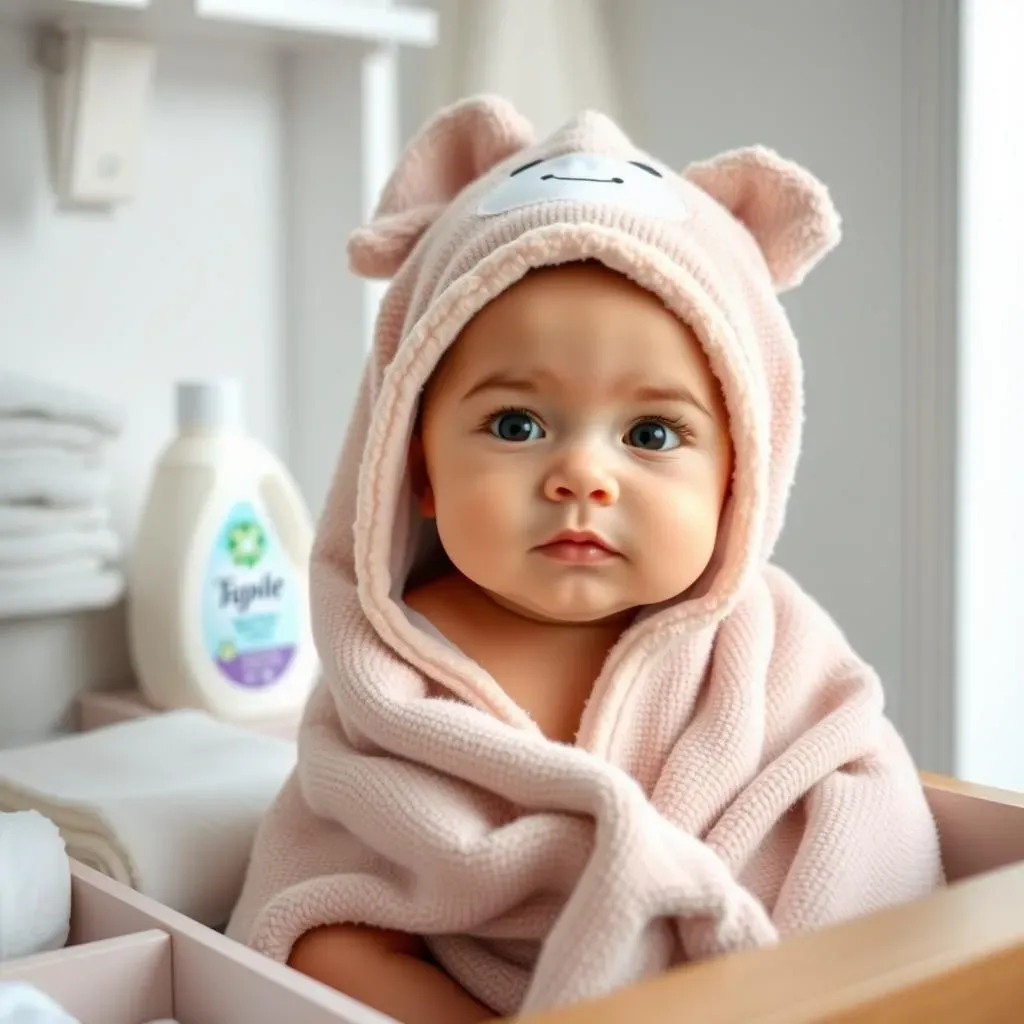
Washing Wisdom: Keeping Towels Soft and Safe
Caring for your baby's hooded towels properly is not just about cleanliness, it's about protecting that precious baby skin! Babies have sensitive skin, so using harsh detergents or fabric softeners can cause irritation or allergic reactions. Always opt for a gentle, fragrance-free detergent specifically designed for babies. Avoid using bleach, as it can damage the fibers of the towel and irritate your baby's skin. When washing, use a warm water setting and a gentle cycle. This will help to remove dirt and bacteria without being too harsh on the fabric. And remember to wash new towels before using them to remove any residual chemicals from the manufacturing process. I cannot stress enough the importance of gentle care when it comes to baby items!
Also, consider using a mesh laundry bag to protect the towels from snagging or tearing in the washing machine. This is especially important for towels with delicate embellishments, like hoods with animal ears or embroidered details. When drying, avoid using high heat, as this can cause the towels to shrink or become stiff. Instead, tumble dry on low heat or hang them out to dry. Sunshine is a natural disinfectant and can help to brighten white towels. Just be sure to avoid direct sunlight for colored towels, as it can cause them to fade.
Storage Solutions: Keeping Towels Fresh and Organized
Once your baby's hooded towels are clean and dry, proper storage is essential for maintaining their freshness and preventing mildew growth. Store towels in a cool, dry place away from direct sunlight. A linen closet or dresser drawer is ideal. Avoid storing damp towels, as this can create a breeding ground for bacteria and mold. If you live in a humid climate, consider using a dehumidifier to keep your storage area dry. Folding towels neatly helps to save space and prevent wrinkles. You can also roll them up for a more compact storage solution. And don't forget to rotate your towels regularly to ensure that all of them get used and washed. Proper storage not only keeps your towels fresh but also helps to extend their lifespan.
Also, consider using drawer dividers or organizers to keep your baby's towels separate from other items. This helps to prevent cross-contamination and keeps things organized. If you have limited storage space, consider using vacuum storage bags to compress your towels and save space. Just be sure to air them out before using them to remove any wrinkles. And don't forget to label your storage containers so you know exactly what's inside. With a little organization, you can keep your baby's towels clean, fresh, and readily accessible whenever you need them!
Tip | Description |
|---|---|
Gentle Detergent | Use fragrance-free, baby-safe detergent. |
Low Heat Drying | Tumble dry on low or hang to dry. |
Proper Storage | Store in a cool, dry place. |
Avoid Bleach | Bleach can damage fabric and irritate skin. |
Beyond Hooded Towels: Other Baby Bath Essentials You'll Need
Beyond Hooded Towels: Other Baby Bath Essentials You'll Need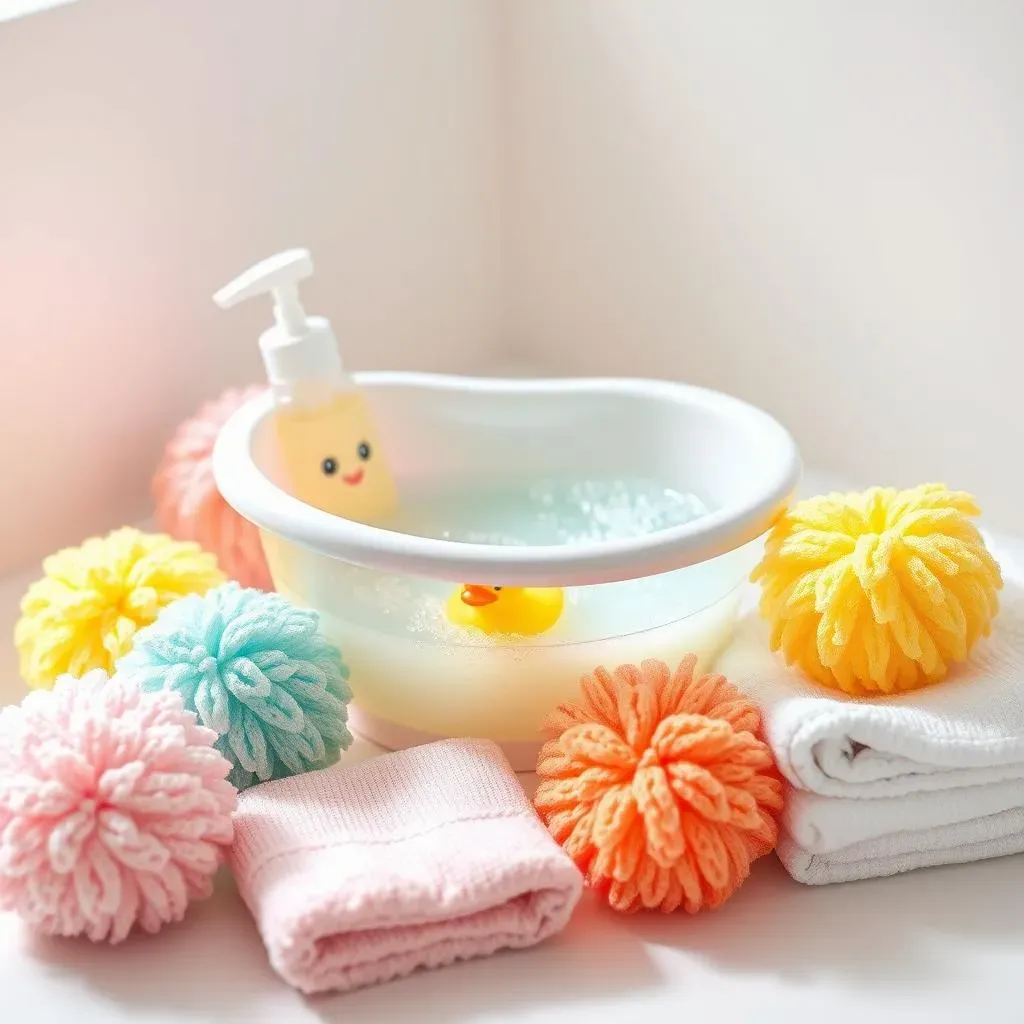
Soft Sponges and Washcloths: Gentle Cleansing
so you've got your hooded towels and washcloths ready to go. But what else do you need for a successful and enjoyable baby bath? First up are soft sponges and washcloths specifically designed for babies. These are much gentler than adult sponges and washcloths, which can be too rough for delicate skin. Look for sponges made from natural materials like sea sponge or soft synthetic materials. When it comes to washcloths, opt for the same soft materials we discussed earlier: cotton, bamboo, or microfiber. These will help you gently cleanse your baby's skin without causing irritation. Remember, bath time should be a relaxing and enjoyable experience for both you and your baby!
When my little cousin was born, my aunt was so worried about using the wrong products on his skin. She did tons of research and finally settled on a set of organic cotton washcloths and a natural sea sponge. She said it made all the difference in keeping his skin soft and healthy. So, don't underestimate the importance of choosing the right cleansing tools!
Tear-Free Shampoo and Body Wash: Gentle Cleansing
Next on the list is tear-free shampoo and body wash. Look, nobody wants a screaming baby during bath time, and harsh soaps can definitely cause some tears! Choose a tear-free formula that is specifically designed for babies. These formulas are gentle on the eyes and won't cause irritation if they accidentally get in your baby's eyes. Also, look for products that are free of harsh chemicals, fragrances, and dyes. These ingredients can irritate your baby's skin and cause allergic reactions. Opt for natural or organic options whenever possible. When in doubt, consult with your pediatrician for recommendations. Also, remember less is more when it comes to baby products!
I'll never forget the time I accidentally used regular shampoo on my friend's baby. He screamed bloody murder! I felt terrible. That's when I learned the importance of using tear-free shampoo. It's a game-changer!
Baby Bathtub or Basin: Safe and Comfortable
A baby bathtub or basin is essential for providing a safe and comfortable bathing environment for your little one. There are many different types of baby bathtubs available, so choose one that suits your needs and preferences. Some bathtubs are designed to be used in the sink, while others can be placed on the floor. Look for a bathtub that is sturdy, stable, and has a non-slip surface. Also, consider the size of the bathtub. You want one that is large enough to accommodate your baby comfortably, but not so large that they feel overwhelmed. Some bathtubs also come with built-in features like a thermometer or a water sprayer. These can be helpful, but they're not essential. The most important thing is to choose a bathtub that is safe and comfortable for your baby.
I remember when my sister was pregnant, she spent hours researching the perfect baby bathtub. She finally settled on one that had a built-in thermometer and a little seat to support the baby. She loved it! She said it made bath time so much easier and more enjoyable.
Item | Description | Why You Need It |
|---|---|---|
Soft Sponges | Gentle cleansing for delicate skin. | Prevents irritation and discomfort. |
Tear-Free Shampoo | Formulated to avoid eye irritation. | Makes bath time tear-free. |
Baby Bathtub | Provides a safe and comfortable bathing space. | Ensures baby's safety and comfort. |
Bath Toys: Making Bath Time Fun
Last but not least, don't forget the bath toys! Bath time should be fun, and bath toys are a great way to keep your baby entertained. Choose toys that are safe, non-toxic, and easy to clean. Avoid toys with small parts that could be a choking hazard. Some popular bath toy options include rubber ducks, floating boats, stacking cups, and squirting toys. You can also use everyday household items like plastic cups and spoons. The possibilities are endless! Just be sure to supervise your baby closely during bath time and never leave them unattended.
My nephew loves bath time because of all the toys he gets to play with. His favorite is a little rubber duck that he likes to chase around the tub. It's so cute to watch him giggle and splash!
Wrapping Up: Finding Your Perfect Hooded Towel Count
Ultimately, deciding how many hooded towels your baby needs comes down to your personal preferences, laundry habits, and available storage space. While our recommendations offer a solid starting point, don't be afraid to adjust based on your own experiences. Prioritize soft, gentle materials that are kind to your baby's skin, and remember that a little preparation goes a long way in making bath time a happy and stress-free experience for both you and your little one. With the right number of cozy hooded towels on hand, you'll be well-equipped to keep your baby clean, warm, and snuggly after every bath.
